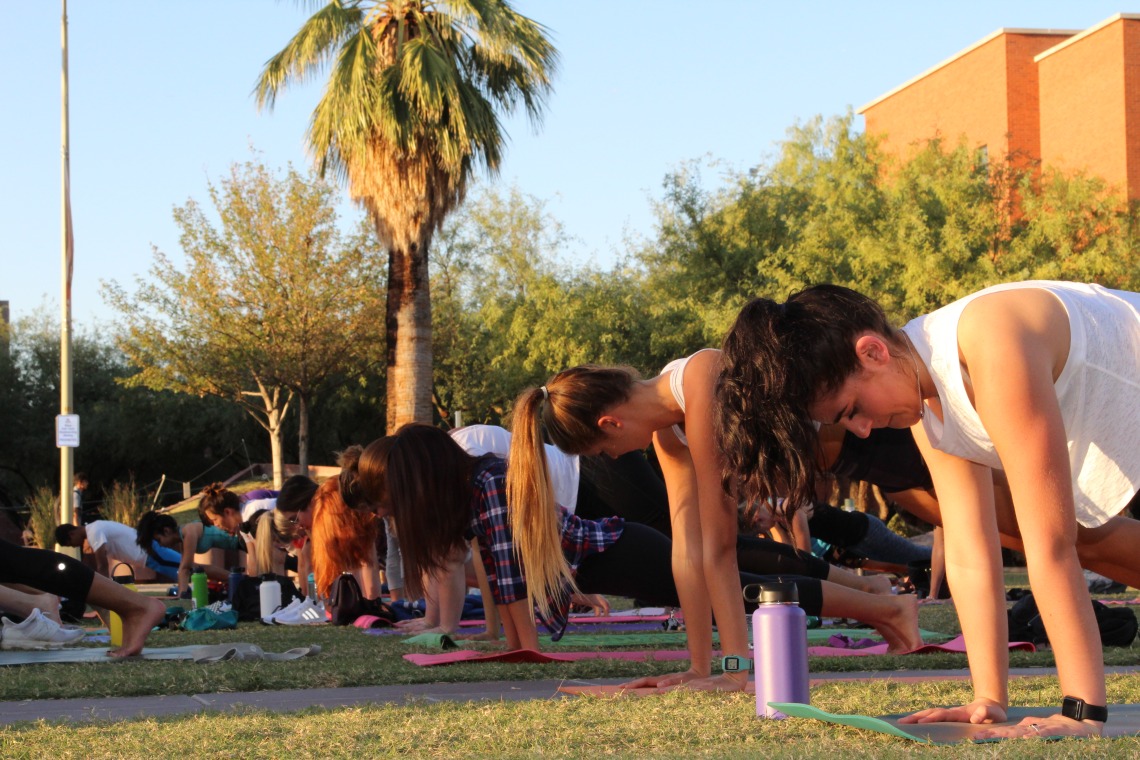Tips to Decrease the Risk of Heat-Related Illness While Excercising

For many people, performing exercise outside in the fresh air is preferred over an enclosed space. But when battling temperatures of over 100℉, extra precautions must be taken in order to do so safely. When exercising in the heat, there is a higher risk of heat exhaustion or heat stroke. Heat exhaustion can happen to those who are not used to the heat and can be the result of inadequate circulatory adjustments combined with fluid loss. Some initial signs of heat exhaustion are headache, heavy sweating, skin that is cold, pale, or clammy, fast and weak pulse, and nausea. While heat exhaustion can result in life-threatening conditions, heatstroke is the more serious of the two. Heatstroke is a result of a total failure of the thermoregulatory processes in our body leading to core temperatures exceeding 104℉. Initial signs are confusion, no sweating or dry skin, hot and red skin, rapid heart rate, vomiting, and loss of consciousness.
Why We Get Hot During Exercise
Increased heat production is one of the demands that consistent physical exertion has on the body. Muscles continually contracting and friction from increased blood flow cause internal body temperatures to rise. The four mechanisms the body uses to give off heat and help cool the body are radiation, conduction, convection, and evaporation. Below are some of the ways we can help these mechanisms reduce our heat production.
Radiation
The transfer of heat from one object to another without physically touching.
The sun’s rays transfer heat to the earth’s surface and to our bodies. To help decrease this transfer of heat, find shade or a way to block these rays. An umbrella can be used if going on a walk or you can find a park with plenty of trees or some artificial shade to complete your workout in. Lightweight, breathable, and light-colored clothing that covers the skin can also help protect you by reflecting the sun’s rays as opposed to dark clothing which retains heat.
Conduction
The transfer of heat from molecules of one object to another through physical touch.
You can decrease your body’s external temperature by bringing a cool water bottle, or ice, and a towel when performing outdoor exercise. Use the water bottle or ice to cool-down the towel and place it on your body.
Convection
The transfer of heat through fluid movement.
This fluid movement can come in the form of water or air. In order to cool through convection, a handheld fan can be used to help cool yourself down. This can also be accomplished my waving a towel or another light object that will move the air in front of you.
Evaporation
Heat transferred from the body to water on the surface of the skin (sweat).
When our sweat reaches a specific temperature, it converts to gas which removes the heat from our bodies through evaporation. During exercise, this thermoregulatory mechanism is the main way our bodies cool themselves down. In more dry climates, it is important to drink enough fluids as water vapor from your skin evaporates quicker. In humid climates, not as much evaporation occurs which can lead to faster rates of heat exhaustion or stroke. It is recommended you consume 17-20 oz. of water 2 hours prior to exercise, 7-10 oz. every 10-20 minutes during exercise, or based on sweat loss, and 16-24 oz. after exercise for every pound lost. You can also wear clothing which allows evaporation to occur, unlike heavy cotton clothing that absorbs water into the material decreasing the rate of evaporation.
Taking the First Step to Outdoor Exercise
If you want to reach your fitness goals through outdoor exercises, it is best to start slowly so your body has the chance to acclimate to the temperature. Then by incorporating a combination of these tips, you have a better chance of performing at a higher level while still protecting yourself from any heat-related health risks.
Sources:
Bryant, C. X., & Green, D. J. (Eds.). (2011). ACE's Essentials of Exercise Science: For Fitness Professionals. ACE.
Hargens, T., & American College of Sports Medicine. (2021). ACSM's Resources for the Personal Trainer. Lippincott Williams & Wilkins.

